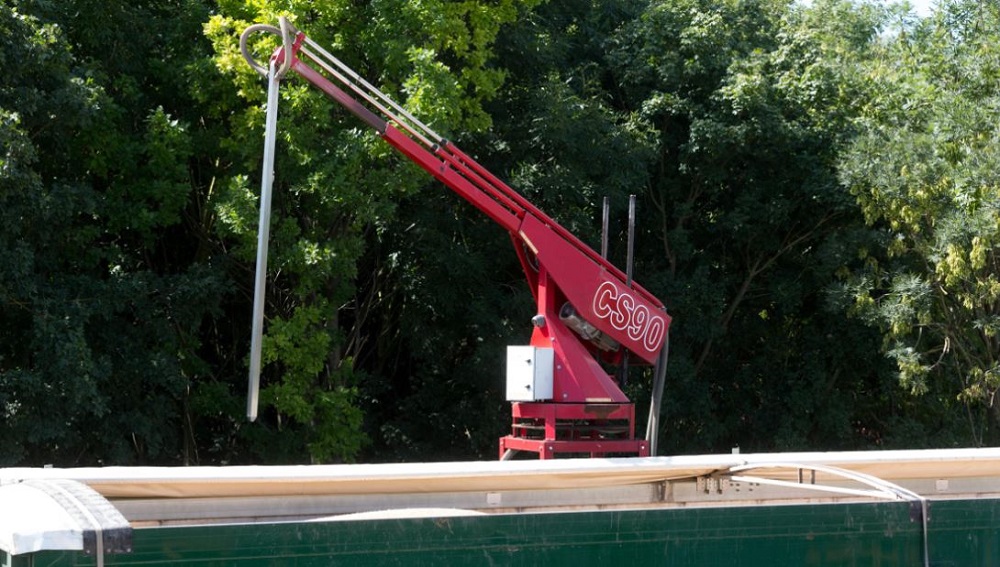- Home
- Knowledge library
- Grain sampling at commercial intake
Grain sampling at commercial intake
Most buyers (merchants and processors) sample and analyse grain at intake to determine its final quality and whether it has met the agreed contractual requirement and specifications. Find out how samples are taken and analysed.
An introduction to grain sampling
What do grain processors test for?
Processors conduct quantitative (e.g. moisture content, protein level, presence of mycotoxins and Hagberg Falling Number) and qualitative (e.g. visual appearance) tests on grain.
The type of tests required depend on the delivery points in question. These vary widely (e.g. animal feed manufacturers, millers, maltsters, breakfast cereal manufacturers and exporters), but sampling methods tend to be similar.
Managing variability in grain loads
The provision of a representative grain sample to the merchant/processor could suffice for quality assessments on delivery. However, unless a vendor assurance programme is in place, all loads delivered to store or processor will be sampled. There are several reasons for this, including:
- Stored grain sources may not be uniformly mixed
- Sometimes, grain is taken from various points in the grain store
- A lack of uniformity across a delivered load*
*For example, heaping in the vehicle, caused by bucket loading, may not level out during haulage.
The AIC No. 1 contract states that deliveries shall be sampled by the receiver at the final consignment point in accordance with the procedure laid down in the ISO 24333 standard or any amendments to it.
Check the contract, merchant annual terms or confirmation note for any special terms relating to sampling.
Sampling example: 30 t grain lorry
For a 30 t bulk vehicle load of cereal grain at an intake point, the recommended ISO 24333:2009 sampling method involves:
- Using a spear long enough to sample the whole depth of grain
- Ideally*, taking eight samples (each weighing at least 400 g)
- Positioning the lorry so most of the load is accessible
- Thoroughly mixing aggregate samples and taking representative samples for testing
*Sample position is more important than the number of samples taken. For lorries of 15 t or less, three samples are usually sufficient.
.png) AHDB
AHDB
Automatic samplers
Most medium-to-large processors use a mechanised spear that is programmable or controlled from the laboratory or intake office, via a joystick.
The spear senses the bottom of the trailer and draws up a sample through the core of the load. Most produce an aggregate sample of 6–8 kg.
In flight, from the lorry to the laboratory, separation of the grain may occur. This means that smaller grains and screenings are likely to arrive quicker than the larger grains. Therefore, the complete sample is mixed thoroughly before samples for testing are taken.
Handheld samplers
Some processors use handheld manual spears, especially if the business is small or automatic samplers are offline.
The spears used should collect samples from different depths, with about 500 g taken at each sampling point.
This may require more than one insertion per sampling point.
Grain cleaning and grinding
The company’s policy on grain cleaning (e.g. dealing with screening and admixture) prior to testing should be detailed in the grain contract. The policy will take into account whether the calibrations for specific tests were developed using clean samples and whether admixture could cause damage to or block equipment.
Cleaning can be carried out using sieves (e.g. to determine screenings) or more specialist equipment.
Samples should be labelled to indicate whether or not they have been cleaned.
Some methods require whole grains to be ground. A relatively large sample should be used, to minimise the influence of any individual grains with extreme values on the final test result.
Most grinders cause particle separation. Bran or husk grind at different rates to endosperm and are often on the surface of the ground sample. Therefore, thorough mixing of the ground sample is essential.
To prevent cross-contamination, grinders should be cleaned or flushed between samples and cleaned thoroughly at the end of the day.
Storage and labelling of samples
- Sample containers used must eliminate cross-contamination risks and limit moisture loss
- For storage, containers should be full and plastic bags should have the air expelled from them (to prevent moisture loss and spillage)
- Adequate labelling is essential for tracing purposes
- Labelling of lids should be avoided, as these can be swapped between samples
- The length of time samples are retained will depend on company policy and/or contracts
Laboratory testing of grain
Contracts should specify testing requirements. For some tests, a reference procedure may be used (e.g. ISO 712:2009 for moisture determination).
Most flour mills and maltings use alternative, more modern, equipment for some tests (such as NIR). However, these will be traceable to the reference procedures.
To ensure conformity of results throughout the year, processors take part in proficiency schemes:
UK Flour Millers intake proficiency scheme
Malting Analytes Proficiency Scheme (MAPS)
TASCC laboratories proficiency schemes
Grain analysts training
Designed for analysts who test wheat, barley and oilseed rape, these modules and information aim to improve the testing standards across the UK.
 Tim Scrivener
Tim Scrivener

